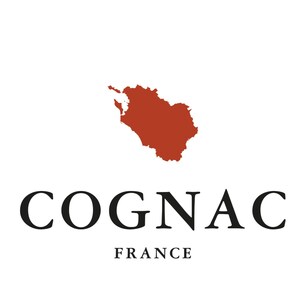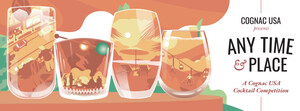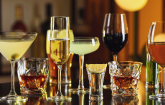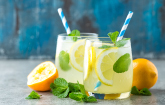NEW YORK, Feb. 26, 2021 /PRNewswire/ --
Cognac Distillation Season
In Cognac, the distillation "season" begins following harvest after the grapes (mostly Ugni Blanc) are fermented into a low-alcohol wine. There is no official kick-off date— distillation generally begins in October/early November, and, by official decree, must end by March 31 the following year. In Cognac, master distillers painstakingly tend to their stills using years of experience and all of their senses to craft this exceptional spirit. Read on to discover insights from Cognac producers.
Transforming Wine into Spirit
Distillation concentrates a wine's aromas and flavors, creating an exceptional elixir with fruity and floral notes and long-aging potential. The general distillation "recipe" is the same for all cognacs and nine (9) liters of wine are needed to produce one (1) liter of cognac!
Alexandre Gabriel, Ferrand Cognac Master Blender, shared, "Distillation is a magical time. When I'm in the distillery, I have the sensation of actually being inside a heated grape. The aromas and smells (warm fruits and pastry) are etched in my brain and my soul. A distiller must capture the very essence of the fruit to make this elixir."
In simple terms: the base white wine is heated in an alambic Charentais. The alambic originated in the 16th century, and the hammered copper pot stills used in Cognac are still handcrafted today, with no two being exactly alike. Vapors from the wine rise and pass through the swan's neck coil and then condense as they cool passing through a serpentine coil. This first distillate, called the brouillis, is around 30% alcohol by volume. It is then distilled a second time. After this bonne chauffe (literally "good heating"), the colorless liquid or eau-de-vie (around 70% abv at this stage) comes off the still and will become cognac only after aging in oak barrels for a minimum of two years.
Decisions, Decisions…the Art of Distillation
Like a master chef, the distiller is an artist, and has many choices and decisions to make along the way, especially during the second distillation. The first liquid to come off the still is the "heads" with the highest alcohol content and is discarded. The distiller separates the "heart" with its fragrances of fruits and flowers from the "tails" which contain undesirable compounds. Each distiller must decide when to make cuts, whether or not to redistill cuts into the next batch, and if temperature adjustments are needed along the way. Another key decision is whether or not to distill on the lees (yeast cells leftover from fermentation) which contributes to the style of the finished cognac and can add texture and richness. These critical decisions require smelling (known as "nosing") and tasting the spirit, as well as intuition and expertise gained from years of experience.
Cognac Park Master Blender Jérôme Tessendier, whose family distillery is in operation in the town of Jarnac, commented, "The first heating focuses on concentration, and the second on the sorting of flavors and aromas. It is with the bonne chauffe, where emotions, desires, and ideas on creating the final spirit come into play."
Thibaut Hontanx, Master Distiller from Maison Courvoisier, shared the house philosophy regarding use of lees. "Our distillation is customized to reveal the true nature of the crus. We distill the wines from Fins Bois without their lees to ensure delicate floral and fruity notes, especially for VS. For Grande Champagne, Petite Champagne and Borderies, we distill with the lees followed by a long maturation to ensure aromatic richness and depth, mainly for VSOP and longer-aged cognacs."
Technical courses are available but there isn't a "distillation school" in Cognac; this expertise is learned on the job and passed down from generation to generation. Tessendier elaborated, "It is indeed the experience, the little secrets or habits, the hand on the controls, that must be passed on from one generation to another. It is a relay between the grower, the winemaker, the distiller, and the cellar master."
Each round of distillation takes around 12 hours, so it's a 24-hour process for one still's worth of wine to be transformed into an eau-de-vie. Distillers work round the clock all winter long, constantly monitoring the stills. The master distiller has one objective: obtain the best possible concentration of aromas in order to offer the cellar master a generous and rich eaux-de-vie. Cellar masters smell and taste the different eaux-de-vie as they age to decide when the time is right to add them to the final cognac blend, taking into account the style of each house.
A Deeper Dive
Care to delve further into distillation? Check out the process on Cognac.fr/en and in this video here. For information on Cognac happenings in the US, visit CognacConnection.com and follow @cognacusa on social media.
ABOUT THE BNIC
The BNIC (Bureau National Interprofessionnel du Cognac) represents, fosters and protects the Cognac Appellation d'Origine Contrôlée in France and abroad. In the 150 countries where Cognac is sold, this AOC assures consumers a product of exceptional quality. With a membership that equally represents the agricultural and commercial interests of Cognac, the BNIC is the consultative and decision-making body for the 4,260 winegrowers, 120 distillers and 280 merchants of the Cognac appellation.
US PRESS CONTACTS
Teuwen Communications
Stephanie Teuwen | [email protected]
Beth Cotenoff | [email protected]
SOURCE Bureau National Interprofessionnel du Cognac

WANT YOUR COMPANY'S NEWS FEATURED ON PRNEWSWIRE.COM?
Newsrooms &
Influencers
Digital Media
Outlets
Journalists
Opted In




Share this article